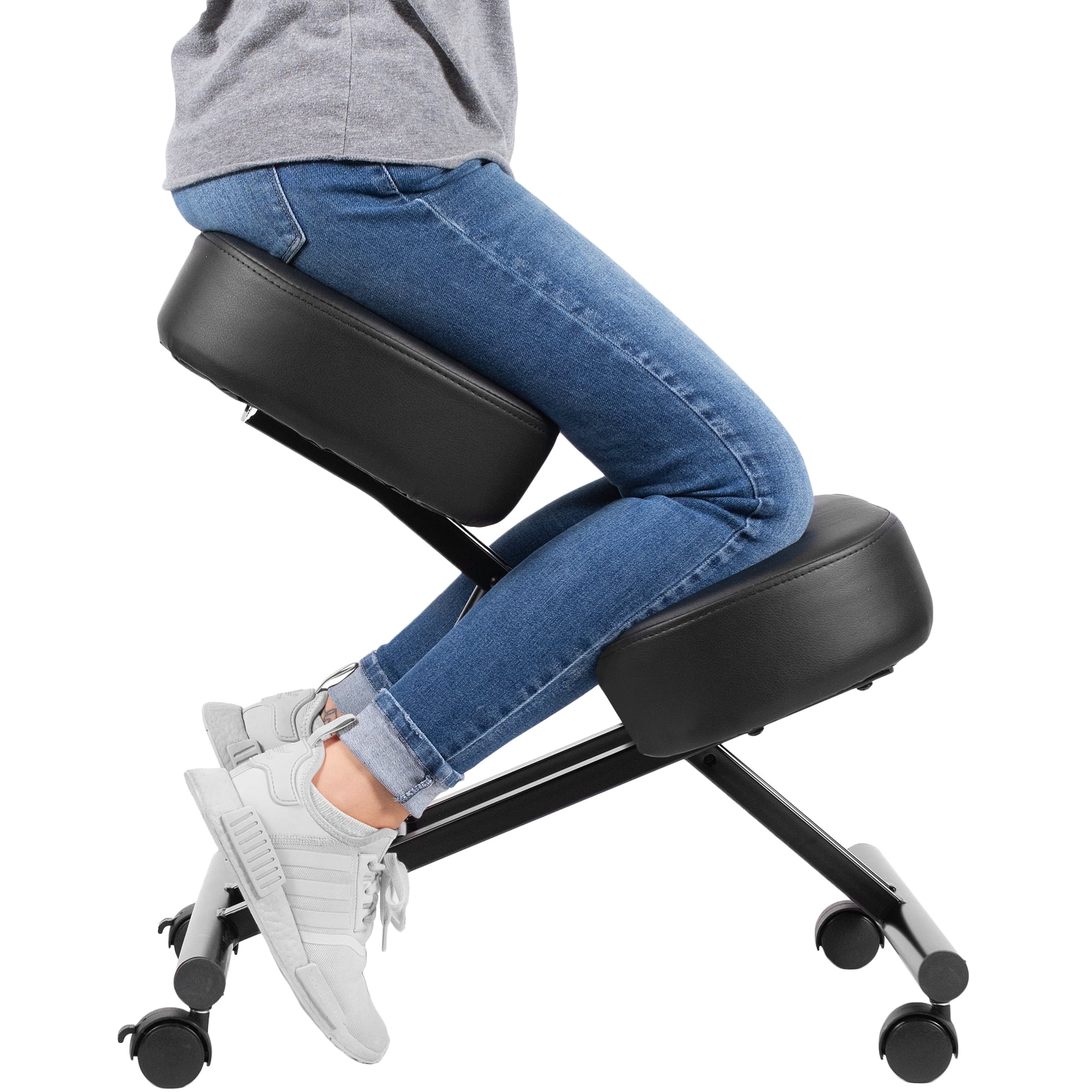Ergonomic Considerations and Benefits: Ergonomic Knee Chair Reviews

The shift towards prioritizing ergonomic design in workplace furniture reflects a growing awareness of the profound impact of posture and seating on overall well-being. Knee chairs, a relatively novel addition to the ergonomic seating landscape, offer a distinct approach to sitting, promising significant benefits for posture, back pain relief, and general health. Their unique design challenges conventional seating habits, encouraging a more natural and supportive alignment of the body.
The inherent benefits of using an ergonomic knee chair stem from its fundamental design principle: shifting weight distribution away from the lower back and onto the thighs and knees. This seemingly simple change has a cascade effect on the body’s posture and biomechanics, mitigating common issues associated with prolonged sitting.
Posture, Back Pain Relief, and Overall Health Benefits of Knee Chairs
The following table summarizes the potential benefits of using an ergonomic knee chair, categorized for clarity.
| Benefit Category | Specific Benefit | Mechanism | Example/Illustration |
|---|---|---|---|
| Posture Improvement | Reduced slouching and improved spinal alignment | Weight distribution encourages an upright posture, reducing the strain on the lower back. | Imagine a person sitting in a traditional chair, slumped over. Now picture them in a knee chair, their spine naturally straighter, weight balanced on their thighs and knees. The difference is palpable; the slumped posture is actively discouraged by the chair’s design. |
| Back Pain Relief | Decreased pressure on the lumbar spine | The weight shift relieves pressure on the intervertebral discs and reduces compression of the lower back. | Individuals suffering from chronic lower back pain often find relief with a knee chair, as the chair’s design minimizes the strain that triggers pain. This contrasts sharply with traditional chairs which often exacerbate the issue. |
| Improved Circulation | Enhanced blood flow to the lower extremities | The open posture promotes better circulation in the legs and feet, reducing the risk of swelling and discomfort. | Compare the leg position in a traditional chair, often cramped and constricted, with the more open and natural leg position in a knee chair. The latter allows for better blood flow and reduces the likelihood of numbness or tingling. |
| Overall Health | Increased awareness of posture and body alignment | The chair’s design encourages users to be more mindful of their posture, leading to improved habits beyond just sitting. | Using a knee chair promotes a conscious effort to maintain good posture, which can translate into better habits while standing or engaging in other activities. This mindful approach to posture can contribute to overall well-being. |
Knee Chair Design and Posture, Ergonomic knee chair reviews
The design of a knee chair actively promotes better posture by encouraging a more natural sitting position. In a traditional chair, the tendency is to slump, allowing the spine to curve excessively. This puts undue stress on the lower back and can lead to pain and discomfort. In contrast, a knee chair’s elevated knee rest supports the thighs, shifting the body’s weight forward and promoting an upright posture. The natural curve of the spine is maintained, reducing strain on the back and neck. Correct posture in a knee chair involves a straight spine, shoulders relaxed, and head held high. Common postural problems such as slouching, rounded shoulders, and forward head posture are mitigated by the chair’s design.
Biomechanics of Sitting in a Knee Chair
Sitting in a knee chair significantly differs from traditional seating in its biomechanics. In traditional chairs, the weight is predominantly borne by the ischial tuberosities (the bony parts of the buttocks), placing significant pressure on the lower back. This can lead to compression of the intervertebral discs and subsequent pain. However, in a knee chair, the weight is distributed across the thighs and knees, significantly reducing the load on the lower back. The angle of the thighs and knees also helps to maintain the natural curvature of the spine, promoting proper alignment and reducing strain. This redistribution of weight is the key to the ergonomic advantages of the knee chair. It actively combats the passive slumping that often occurs in conventional chairs.
